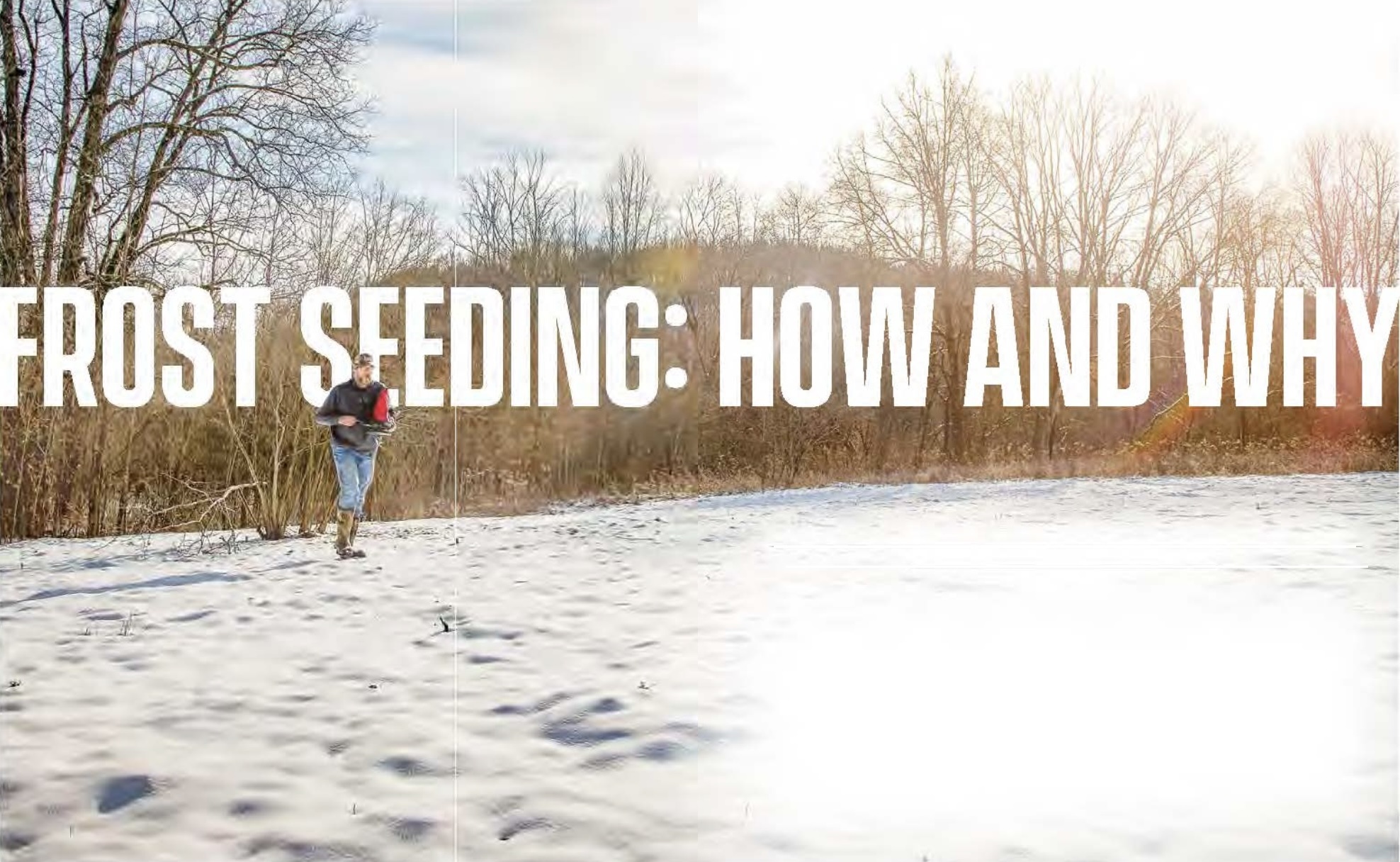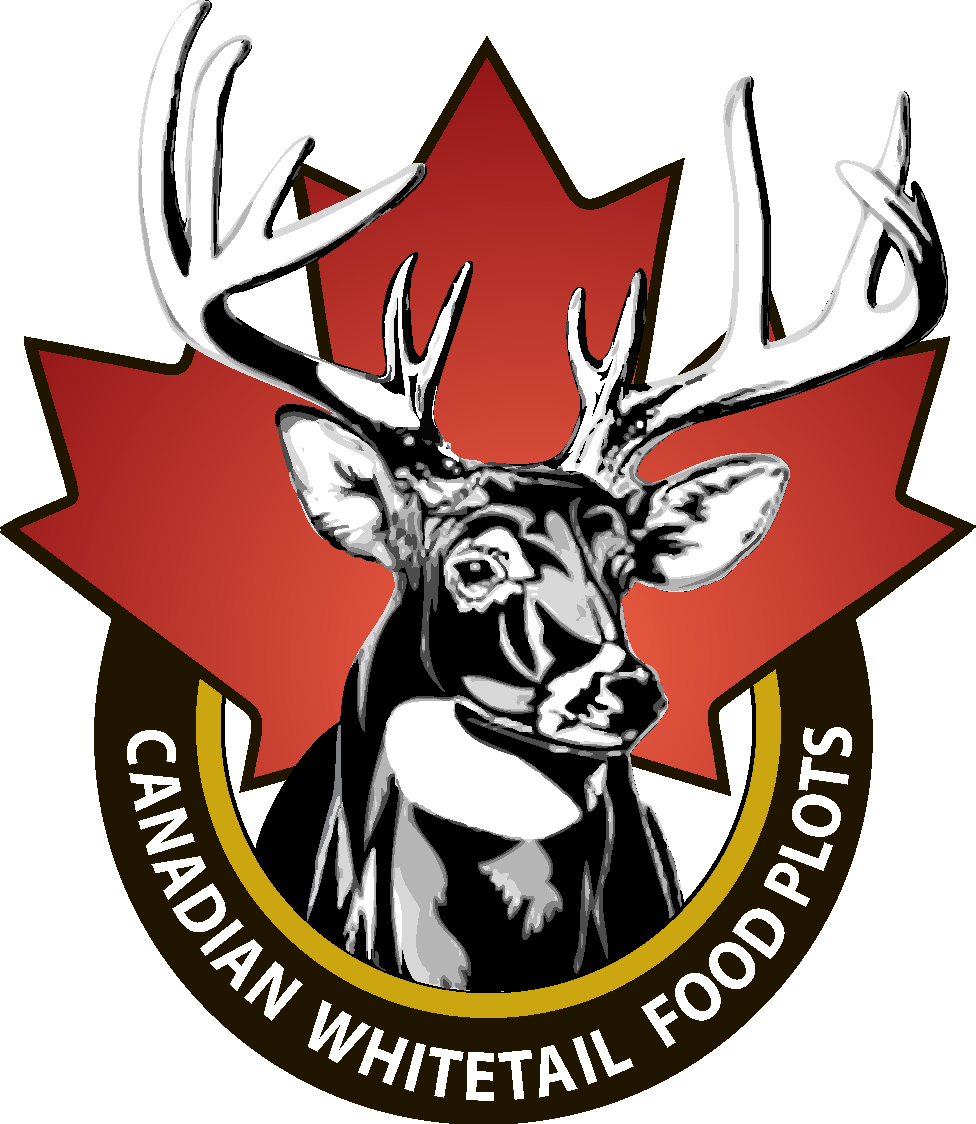Frost Seeding: How and Why
By Scott Bestul

Be it a blessing or a curse, I am a seed guy and seed guys don’t just like pretty food plots for their deer, they are often just as obsessed about their lawn back home. When my neighbors walk by my house, I am continuously asked what I do to grow the greenest and most luscious grass on the street. While not giving away all of my trade secrets so as to maintain the title of Grass King at home, every spring, my lawn gets a little TLC and broadcasting some premium Kentucky Bluegrass seeds is an annual practice for me.
The same TLC should be applied to existing clover and chicory food plots only at much different times of the year.
What is Frost Seeding?
Like most food plotting equipment and techniques, frost seeding is something food plotters stole directly from farmers. The practice is used in agriculture to boost production of existing pastures. Frost seeding is an economical way to establish cover crops in winter in standing wheat or barley or to supplement a thin forage stand. Though not as foolproof as drilling, it is a reasonably successful practice. For several years, I hunted a large property near my home, and the farmer used rotational grazing to keep pastures viable for his sheep and cattle. He commonly used frost seeding to extend the life of his pastures without enduring the expense of tilling and replanting those fields.
As the name implies, frost seeding is typically done in late winter or early spring. Seed is spread directly on the ground, which, thanks to freezing temperatures at night and thawing temperatures during the day, is continually heaving. Some years, this window of opportunity can come and go quickly as temperatures have been known to climb quickly given an early spring. The trick is to ensure that you are applying seed to the snow or ground when the temps are still thawing during the day and freezing at night. The active nature of the soil lets seeds make contact with the dirt and then get worked down into the topsoil. When soil temps warm, seeds germinate, and they’re off to the races before the weeds come to life. I’ve used frost seeding mostly in clover and chicory plots, but you can also use it effectively in annual food plots Pure Attraction and Oats Plus.
From my experience, frost seeding has three major benefits. First, it can extend the life of a clover plot by introducing new growth into a sea of plants that are nearing the end of their life cycle. As most veteran clover growers know, the first few years of a clover plot usually represent the peak attraction period for deer. The plants are young and tender, not only packed with protein but also tasty. But as the stand ages, even with the best maintenance, the plant population thins. Frost seeding can give an aging plot the shot in the arm it needs in its last phase of life.
Second, frost seeding helps to combat weed growth, particularly if there are bare spots in your plot. Some of those will likely be evident as you visit the plot to frost seed, but I know several land managers who mark those under-seeded areas by flagging them before snowfall. Then, when they return in spring, they have clearly defined spots that require a little extra attention. Imperial Whitetail Clover and Imperial Fusion are a fairly aggressive growers after they are established, and frost seeding lets desirable plants get a nice head start on weed competition. In my experience, this has been so successful that I can often forgo herbicide use and keep weed growth at bay by simply mowing at the appropriate times.
Finally, frost seeding can save time and, occasionally, money. Although even frost seeding won’t make a solid plot last forever, it delays tilling up and replanting a plot at the end of its life cycle. Most of us are hard-pressed for time, and some years, we don’t have enough hours to do all the things we should. More than once, when life has dealt me a schedule crammed with stuff that interferes with deer management, I’ve used frost seeding to allow a one-year reprieve.
How to Pull it Off
As noted, frost seeding is best done when the ground is still frozen but spring is threatening. My friend Kip Adams, director of conservation at the National Deer Association, is a Pennsylvania resident and land manager. He likes to frost seed in late February through March, because spring green-up is typically in mid-April in the Keystone State. Adams isn’t afraid to frost seed into an inch or more of snow. This timing should work across most areas of similar latitude, with the best windows occurring earlier in the South (January and February) and later in more northern climates (April or even early May in some years).
Also, when it comes to frost seeding food plots, only hard seed like Clover or Chicory or Alfalfa should be used individually or as a blend like Imperial Clover, Fusion or Alfa-Rack Plus.
Ideally, plots you intend to frost seed should be hit with an herbicide in fall, which should knock back weed competition and give your preferred crop a great start. But if you missed this step or do not use herbicides, go ahead and frost seed. Most expert plotters I talk to follow recommended seeding rates when frost seeding, but I tend to apply a little extra seed, especially in areas I know are thin or bare. I don’t expect a full germination catch when frost seeding, so I’m typically more generous with my seed application in my attempt to choke out more weeds.
Conclusion
Frost seeding will never replace the traditional steps for establishing a food plot. But it can be a viable tool in a food plotter’s arsenal and it can pump new life in a plot that might have been history without it. In fact, I’m going to visit all of my perennial plots this spring with a seeder slung on my shoulder.
